MEET ARTIST EZ: A MECHA DOLL BROUGHT TO LIFE
EZ is a mechanised doll brought to life. Over recent years the Korea-born digital artist and model has been crafting a digital identity that fuses a beautiful blend of anime culture, fetish costumes and neo-humanism ideas, all viewed through the lens of augmented reality art.
The myriad of different characters created by EZ form a conduit for their expression, a means of digging deep within and learning to cope with our data-drenched, over-consumed and highly stimulating post-modern society.
Recently EZ’s work has picked up steam, raising heads' at Nick Knight’s SHOWstudio as well as being featured in a collaborative exhibition curated by Meta.
With EZ’s recent visit to Tokyo, the GATA team had the chance to take a trip to test out the exoskeleton suits at Skeletonics, and grab an exclusive interview delving into the origin of EZ’s cyborg identity, connecting the dots between futuristic headwear, pole dancing and the cinematic classic “Air Doll”.
GATA: Hi EZ thanks for talking to us, could you introduce yourself to the GATA readers?
EZ: Thank you for having me. I’m EZ, I’m an artist and also a model. My artistic practice focuses on digital body art using augmented reality. I perceive myself as a mecha doll. My work is a persona of myself, like a virtual character, hologram avatar and digital reflection.
GATA: Where are you currently based? What is the creative scene like there?
EZ: I'm in Korea now. I was born in Korea and grew up in Canada and the US. I studied at the School of Visual Arts, and have been living in New York until last year. My work doesn't reflect where I am physically now. It derived from the life I had growing up. I'm barely affected by what the creative scene is like in here. I’m aware of trends and idol culture, although I know I’m not blended in. I attach to myself or more online, where influences around my work heavily come from.
“I get over-consumed and inspired by everything around me so I tend to withdraw and sometimes I am quite empty. It’s one of my mechanisms of coping with that tendency in real life. Like a digital shield. ”
GATA: Why did you decide to focus your art on augmented reality?
EZ: Augmented reality is like intertwining the real and fantasy. I like to fill the gap between fantasy and IRL and the idea of augmentation grew natural for me and ever since then, my work has been produced digitally.
I self-proclaim as a Mecha doll; it comes from the word Love doll, a synthesis of my body in the physical realm and digital entity as well as a spiritual realm. As an extension of myself, the creation filled my void, as without it I feel vulnerable. I get over-consumed and inspired by everything around me so I tend to withdraw and sometimes I am quite empty. It’s one of my mechanisms of coping with that tendency in real life. Like a digital shield.
It's only recently that I have been immersed exploring in the digital world and I feel reborn as a cyborg who just learned how to speak, feel and love, like I’m learning new aspects of life in every way, physically, emotionally and visually. Even at this moment.
GATA: Mecha, eye patches, school uniforms—anime and otaku culture seem to have had a huge influence on your aesthetic and style; what exactly is it about this genre that you are so attracted to?
EZ: My aesthetic obsession comes from archived memories online. I like to mix cyborg, shojo manga fashion with fetish style. I love wearing costumes, it makes me feel like a plastic doll. It is normal to dress like a schoolgirl, because actually it’s the opposite in reality, I’m an adult and I don’t want to belong anywhere. My saturated feelings create the force within me to create new images and characters when I spend time alone. When the pandemic happened, I went down the rabbit hole of artistic drift and self-discovery. My creative desires were put online, I had a metamorphosis at that time.
I like the exploration of VR and augmentation, a matrix reality, the metaverse is a dimension mixing what’s real and artificial. I started thinking that if there's another side of the simulation that we are living in right now, I can be transported to different portals every day like a game character.
Machines and love dolls resonated with me because they artificially exist in physical space and are immaterial at a spiritual level and I could relate their existence to mine. I dress up in a way that plastic figures would dress. It's like air pumping into me and believing I could come to life.
GATA: Last year you had your work displayed in a group exhibition curated by Meta, how was this experience?
EZ: For the first time I had my work showcased in the physical space, with other incredible creators who are geniuses. It was overwhelming, and fun to see my work outside of my own screen. I realized that my work is visible to other people and the experience that I bring is real because I don't realize how other people would view my work during the process.
“ I dress up in a way that plastic figures would dress. It’s like air pumping into me and believing I could come to life. ”
GATA: Pole dancing, laser-equipped heels—these have become new aspects to your social media posts recently; could you tell us more about this new interest?
EZ: I had a fever dream about Tokyo when I was in New York. My recent trip there had an impact on my pole dancing. I had one night to perform as a “red light district dancer” in Kabukicho for Kiko Mizuhara’s Heaven by Marc Jacobs party. I have anxiety and being out at night always felt like euphoric and chaotic moments for me. Putting myself out there ironically felt like I was connected to something.
I’ve had a dream of being a cyborg dancer, and I use lasers in my AR work so I wanted to bring that into real life, I thought what if my heels could do that while pole dancing? I became increasingly aware of emotions after I started creating and sharing online. I got attached to an idealized state. My creative desires aligned with a vision that has shifted through over time. I like extremes and portrayals of love in films and I wanted to bring what’s on my mind into my work. It’s a progressive era I embrace.
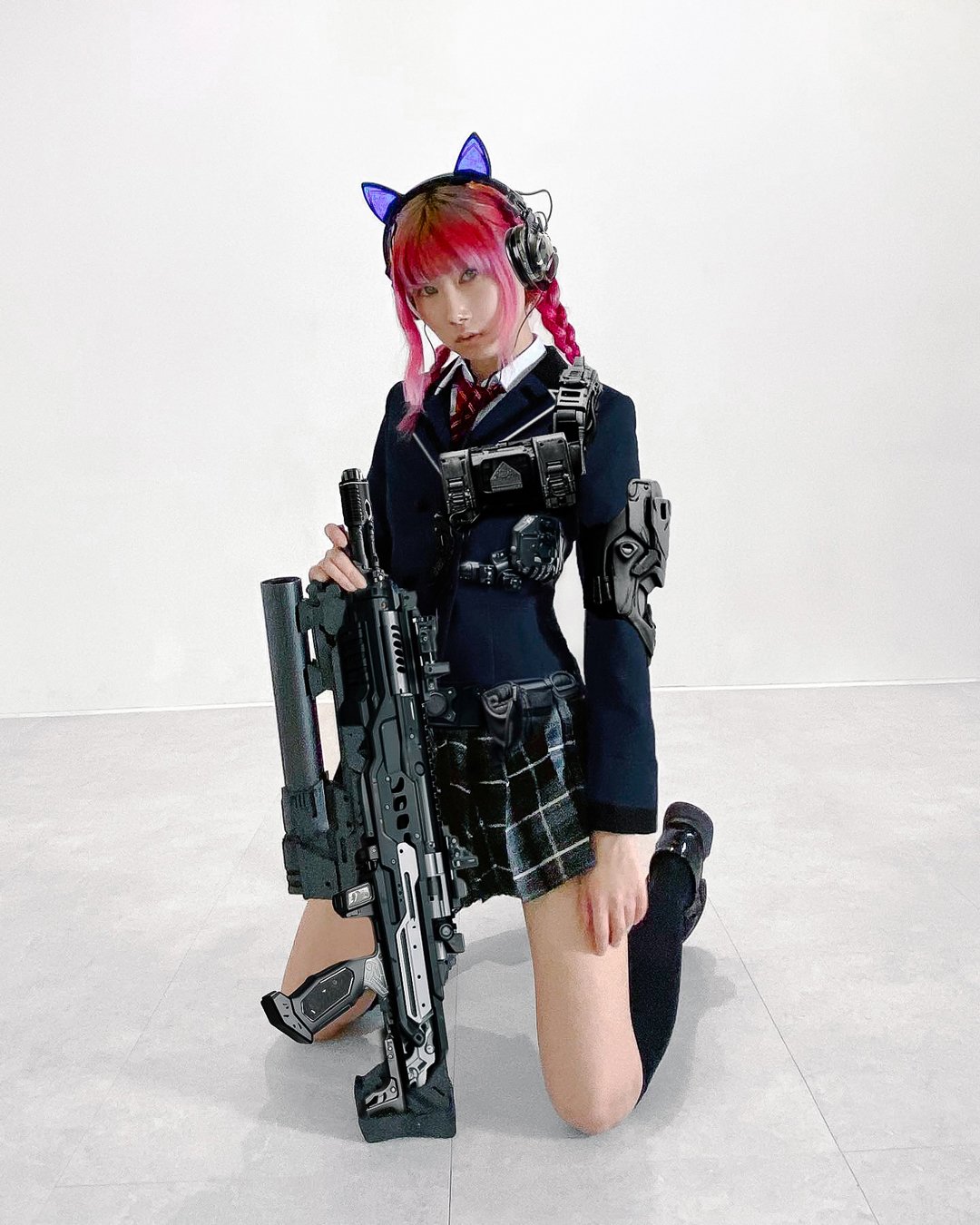
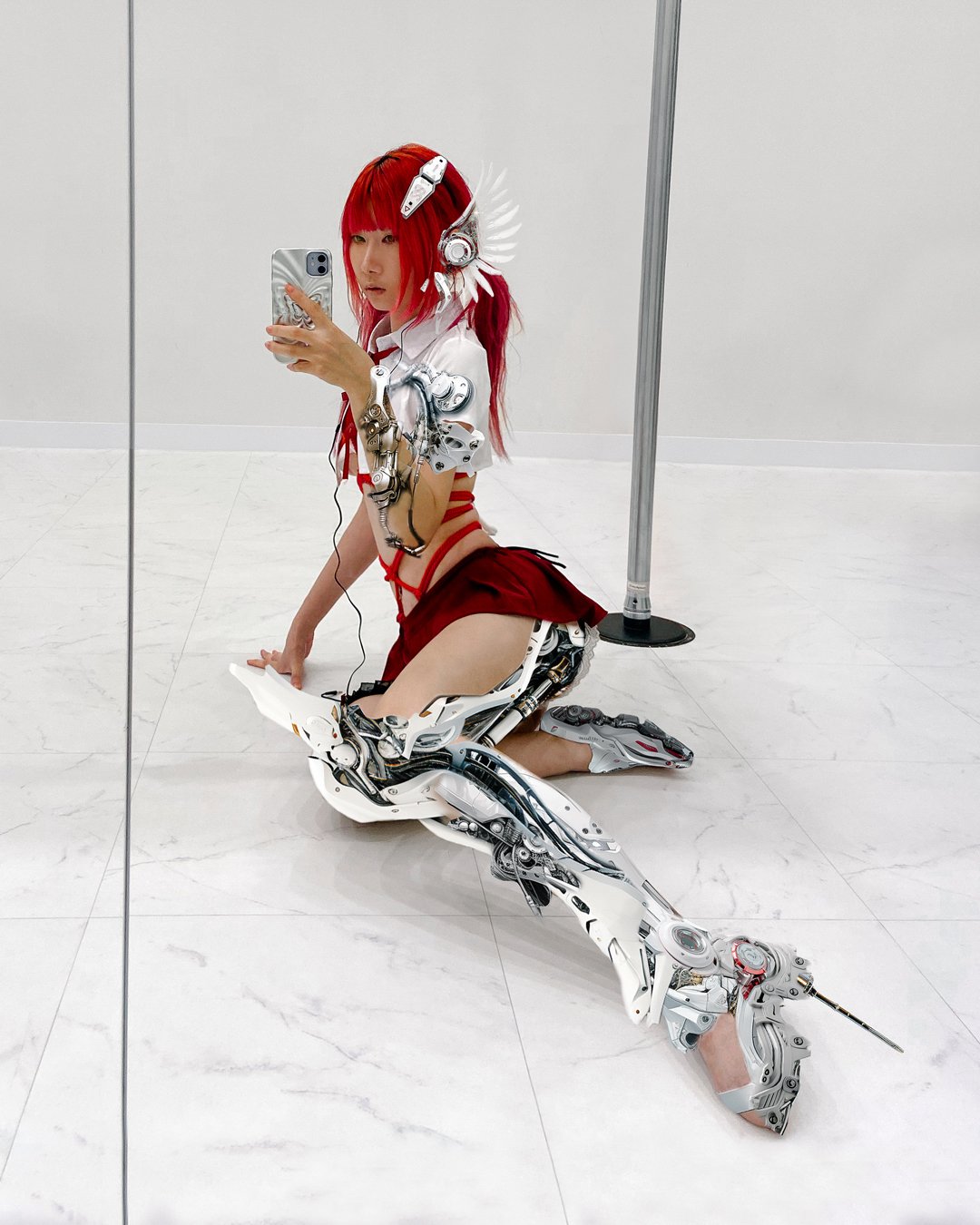
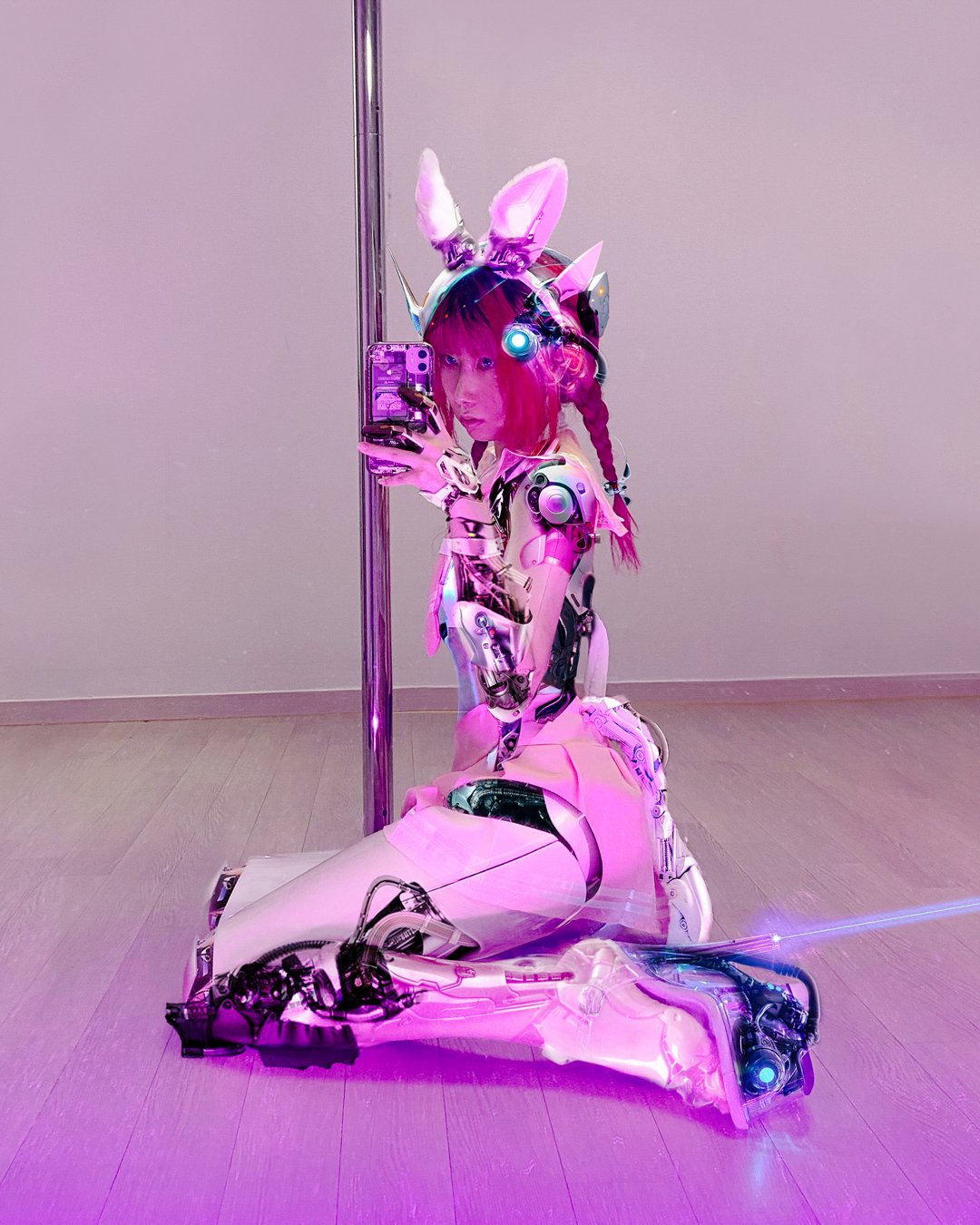
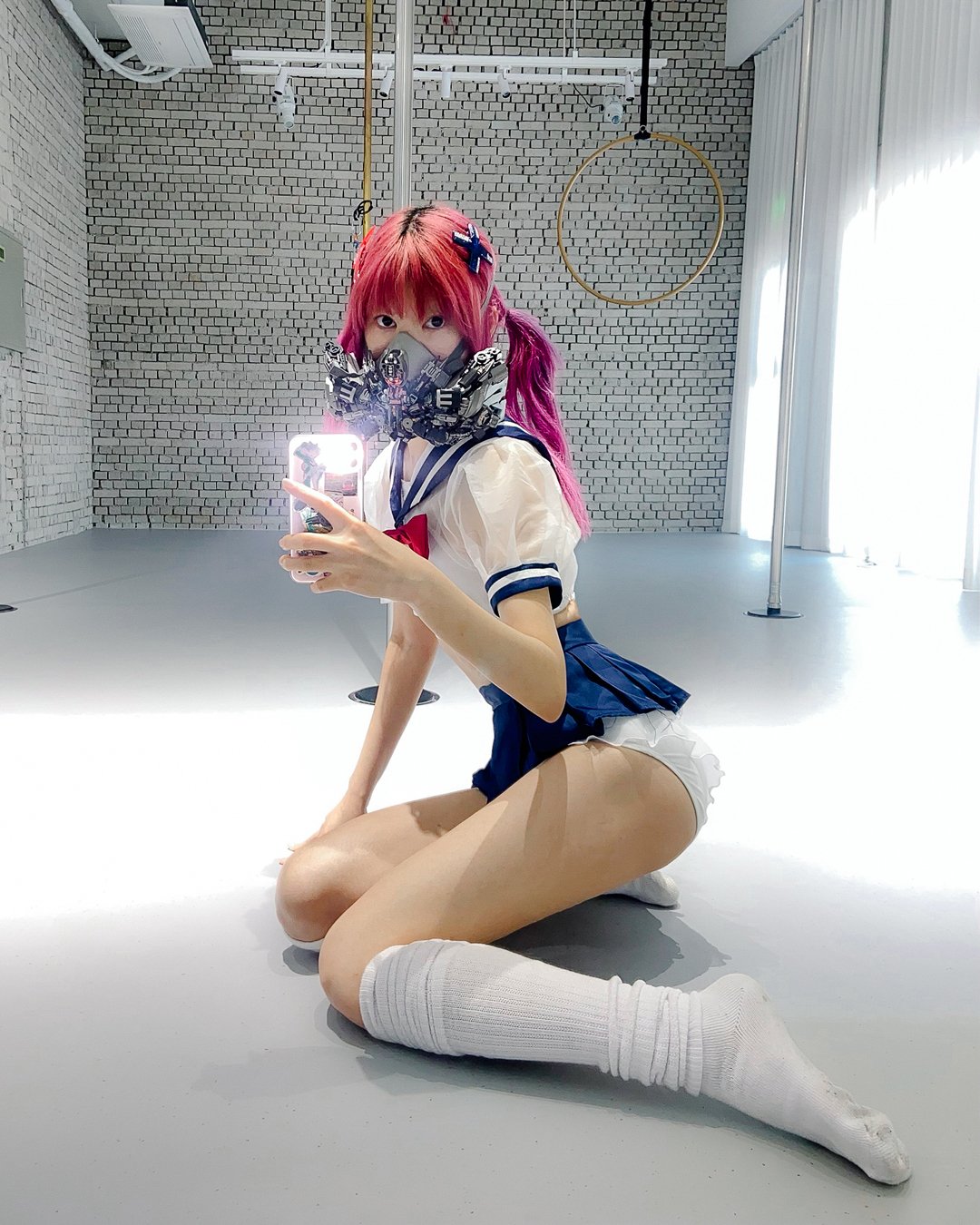
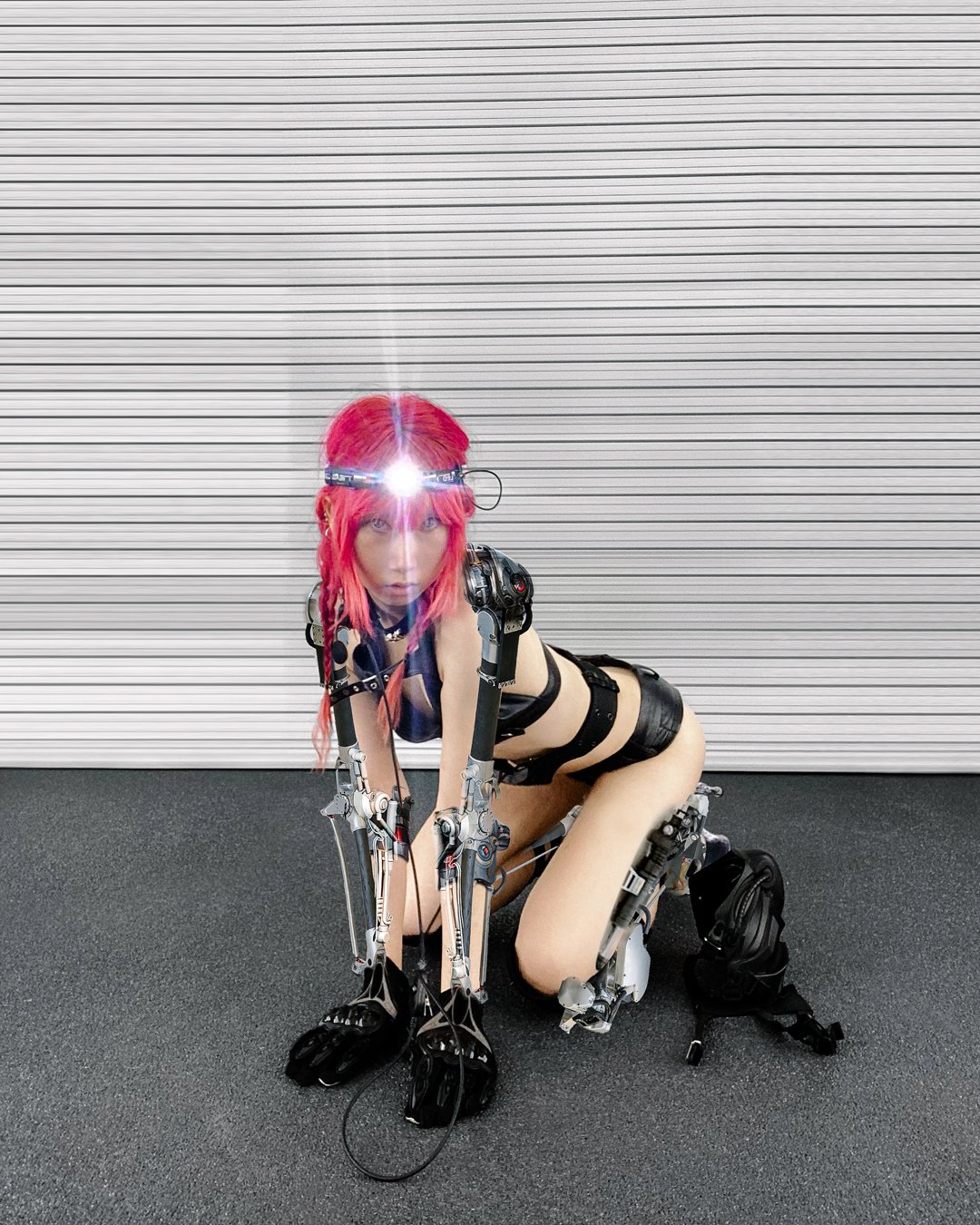
“The way is to iterate my brain waves to think I can systemize as a machine. I think anyone can become a world of themselves.”
GATA: You recently had the honour of working with Nick Knight and SHOWstudio; how did this collaboration come to be?
EZ: I made AR headpieces and collaborated with other digital designers like Scry and Sapiensi and styled by Jazelle in the metaverse. I’m super honoured to have collaborated with them as I grew up in the art world inspired by the works of Nick Knight.
TOX DOLL NFT Collaboration for SHOWstudio
GATA: Are there any projects or plans for the future that you can share with us?
EZ: I’m working on my pole dancing skills and I want to perform one day with my laser heels. I make physical gear now and I want to have more exciting offline experiences. I will be going to Paris to shoot a video of pole dancing. I'm collaborating with Evgenia for the shoot. We’re going to make a fictional story, wear costumes, and be cyborg dancers.




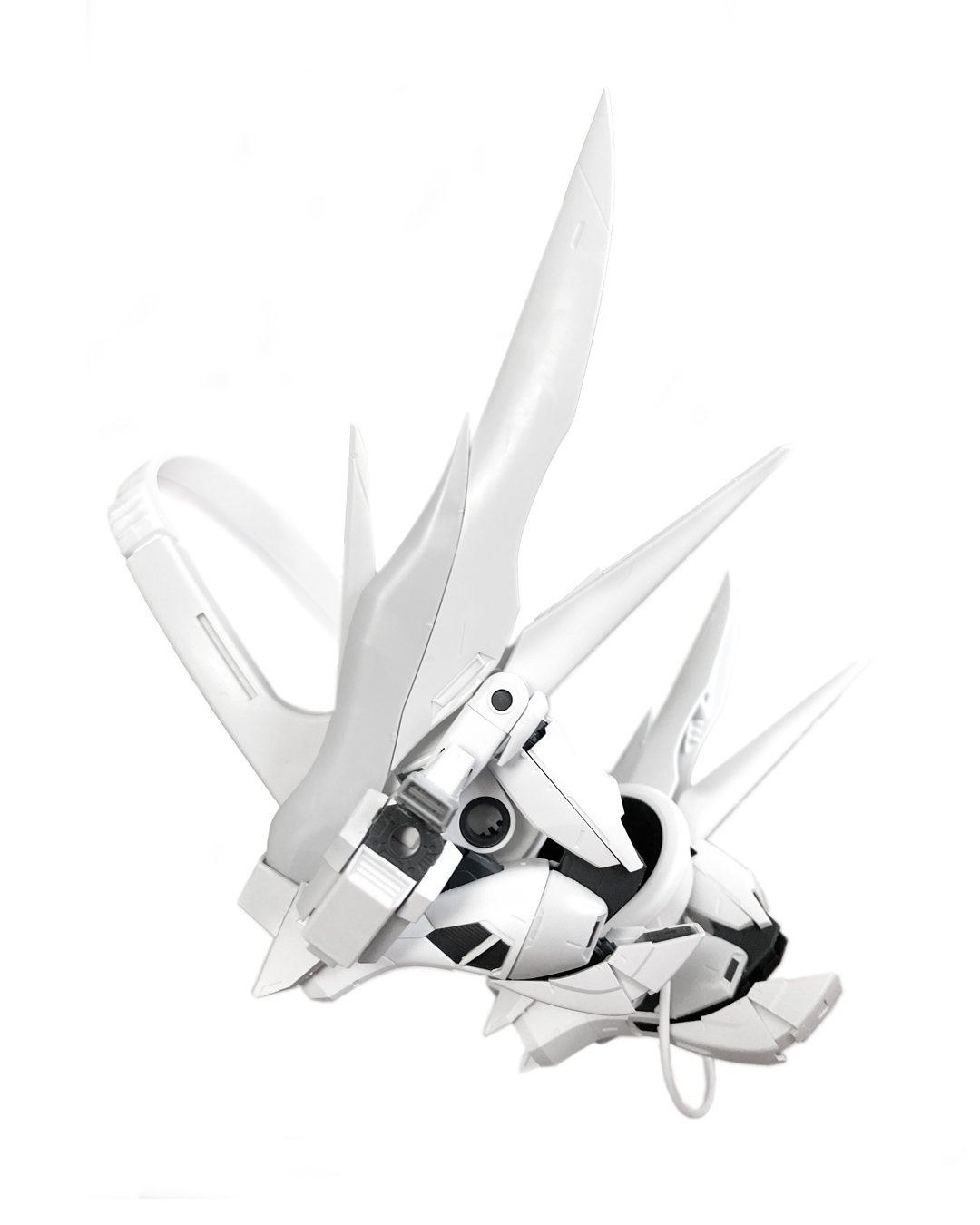

EZAR's cybernetic mecha wear
GATA: At GATA we love cinema, are there any films that have to recommend to our readers?
EZ: I love cinema, especially: Air Doll (2009), Snakes and Earrings (2008), I'm a Cyborg, But That's OK (2006), Enter the Void (2009), Ghost In The Shell (1995), Picnic (1996), Ghost In The Shell 2: Innocence (2004) and The Matrix (1999), Donnie Darko (2001), The Doom Generation (1995) and Blade Runner 2049 (2017).















